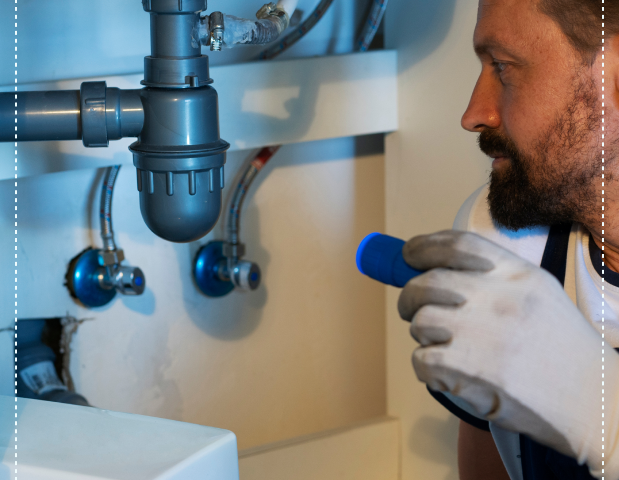In today’s dynamic educational landscape, the effective management of school facilities is more critical than ever. Educational institutions face evolving challenges that demand efficient solutions. This article explores the transformative potential of facilities management software for schools, emphasizing its role in enhancing educational efficiency.
The Evolving Landscape of School Management
Modern education is undergoing rapid transformation, driven by technological advancements and innovative teaching methodologies. To keep pace with these changes, schools must not only adapt their curricula but also revamp how they manage their physical resources.
Traditionally, school management involved manual processes, paper records, and sporadic maintenance checks. However, as schools grew in complexity and size, these methods proved inadequate. The increasing need for data-driven decision-making, cost optimization, and ensuring a safe and conducive learning environment has led to the emergence of facilities management software.
Understanding Facilities Management Software for Schools
Facilities management software is a comprehensive solution designed to streamline the management of a school’s physical assets and spaces. It offers a centralized platform for tracking, maintaining, and optimizing various aspects of school facilities, including buildings, classrooms, equipment, and utilities.
Key Features of School Facility Management Software
One of the core features of school facility management software is asset tracking and maintenance scheduling. This ensures that valuable school assets, from HVAC systems to computers, receive proper maintenance, prolonging their lifespan and reducing downtime.
Optimizing space management is another critical aspect. Schools can efficiently allocate and manage classroom spaces, ensuring that each room is utilized effectively. This not only maximizes the use of available resources but also creates a better learning environment.
Enhancing energy efficiency is a key concern for educational institutions. Facilities management software enables schools to monitor energy consumption, identify areas for improvement, and implement energy-saving measures. This not only reduces operational costs but also contributes to sustainability initiatives.
Ensuring compliance and safety is paramount in educational institutions. The software helps schools maintain compliance with safety regulations and conduct regular safety inspections. This proactive approach minimizes risks and ensures the well-being of students and staff.
Benefits of Facilities Management Software for Schools
Streamlining School Operations with Facility Management Software
By automating routine tasks such as maintenance scheduling, resource allocation, and inventory management, schools can allocate resources more efficiently. This results in significant time and cost savings.
Realizing Cost Savings through Efficient Facility Management
Efficient facility management leads to cost savings in various ways. Preventive maintenance reduces the need for costly repairs, optimizing space allocation minimizes wasted resources, and energy efficiency measures lower utility bills.
Creating Ideal Learning Environments
A well-maintained and optimized school environment contributes to a better learning experience. Comfortable classrooms, functional equipment, and safe facilities create an ideal setting for students to excel.
Fostering Sustainability Initiatives
Schools are increasingly focused on sustainability. Facilities management software supports sustainability initiatives by reducing energy consumption, minimizing waste, and promoting responsible resource management.
Success Stories: Implementing School Facility Management Software
Case Study 1: Transforming Campus Efficiency with Facilities Management Software for Schools
School A, a medium-sized educational institution, implemented facilities management software to streamline its operations. The results were remarkable. Within a year of implementation, the school experienced a 20% reduction in maintenance costs. Preventive maintenance practices led to fewer breakdowns, resulting in minimal disruptions to classes. Additionally, the software helped optimize classroom allocation, ensuring that each room was used effectively, which improved overall campus efficiency.
Case Study 2: Elevating Safety Measures with School Facility Management Software
Safety is a top priority for schools. School B recognized the need for a more systematic approach to safety inspections and compliance. By implementing facility management software, they were able to schedule regular safety checks, monitor compliance with safety regulations, and maintain comprehensive safety records. This proactive approach not only enhanced the safety of students and staff but also ensured that the school was well-prepared for safety audits.
Overcoming Implementation Challenges
Addressing Implementation Challenges Effectively
Implementing new software can be a daunting task, but with proper planning and a well-defined implementation strategy, schools can overcome challenges effectively. It’s essential to involve key stakeholders, provide adequate training, and gradually transition to the new system to minimize disruptions.
Ensuring Smooth Adoption and Training
User training is a crucial aspect of successful implementation. Schools should invest in comprehensive training programs to ensure that staff members are proficient in using the software. This not only enhances user satisfaction but also maximizes the benefits of the software.
Prioritizing Data Security
Data security is a significant concern, especially when managing sensitive information related to students and staff. Schools must prioritize data security by implementing robust encryption, access controls, and regular security audits to protect sensitive information from unauthorized access.
The Future of Facilities Management Software in Education
The future holds promising trends for facilities management software in education. Integration with the Internet of Things (IoT) is on the horizon, allowing schools to collect real-time data from various sensors and devices. Predictive maintenance algorithms will become more sophisticated, helping schools anticipate maintenance needs and prevent equipment failures. Advanced analytics will provide deeper insights into facility performance, enabling data-driven decision-making.
Conclusion
Facilities management software for schools is more than just a tool; it’s an investment in the future of education. As educational institutions embrace these innovative solutions, they position themselves for greater efficiency, cost savings, and the ability to create ideal learning environments. By leveraging the power of technology, schools can enhance their educational mission and provide students with the best possible learning experience.
Frequently Asked Questions (FAQs)
How does Facilities Management Software for Schools Benefit Educational Institutions?
Facilities management software streamlines operations, reduces costs, enhances safety, and supports sustainability efforts, ultimately creating better learning environments.
Can Small Schools Leverage School Facility Management Software?
Absolutely, facilities management software can be tailored to the specific needs and scale of small schools, making it accessible to all.
Is Data Security a Concern in School Facility Management Software?
Data security is a top priority, and modern facilities management software incorporates robust security measures to protect sensitive information.
What Trends Can We Expect in School Facility Management Software?
The
future holds trends like IoT integration, predictive maintenance, and advanced analytics, enabling even more efficient facility management.
How Can Schools Get Started with Implementing School Facility Management Software?
Getting started involves evaluating school needs, selecting the right software, providing adequate training, and gradually implementing the system to ensure a smooth transition.





